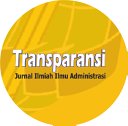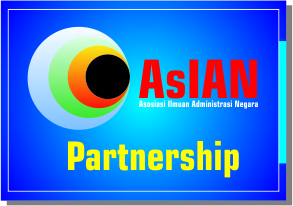Analisis Stakeholder Pengelolaan Sumber Daya Hutan di Kabupaten Jember
DOI:
https://doi.org/10.31334/transparansi.v3i2.1156Keywords:
Forest management, Stakeholders, Public company PerhutaniAbstract
This study aims to analyze stakeholders in forest resource management in Tugusari Village, Bangsalsari District, Jember Regency. This research is motivated by the drastic reduction of critical land in Jember Regency, or in other words, there is success in forest conservation. In answering the problem formulation using Overseas Development Administration theory to identify stakeholders. Meanwhile, for the categorization and interrelation of stakeholders using Reed's theory. This study uses descriptive qualitative method. The results of this study have identified primary, secondary and key stakeholders. The primary stakeholders were LMDH Wana Makmur and the Tugusari Village Government. Secondary stakeholders are PWH Unit VII Bondowoso Jember working area. The key stakeholder is the public company Perhutani KPH Jember. Meanwhile, the stakeholder category consists of key players, contact setters, subjects and crowd. The key category is the public company Perhutani KPH Jember. The contract setters, namely the Village Government. Subjects were LMDH Wana Makmur and Crowd, namely UPT PWH VII Bondowoso, Jember working area. While, the interrelation between LMDH Wana Makmur stakeholders and the public company Perhutani KPH Jember went good because they often held coordination meetings and collaborative involvementReferences
Ackermann, F., & Eden, C. (2011). Strategic Management of Stakeholders : Theory and Practice. Long Range Planning, 44(3), 179–196. https://doi.org/10.1016/j.lrp.2010.08.001
Bryson, J. (2003). What to do when stakeholders matter : A guide to stakeholder identification and analysis techniques.
Creswell, J. (2009). Research Design, Qualitative, Quantitative And Mixed Methods Approaches. Sage Publication.
Derak, M., Cortina, J., & Taiqui, L. (2017). Integration of stakeholder choices and multi-criteria analysis to support land use planning in semiarid areas. Land Use Policy, 64, 414–428. https://doi.org/10.1016/j.landusepol.2017.03.006
Fibrianingtyas, A. (2020). Sinergitas Stakeholder Dalam Pengelolaan Kelestarian Hutan Kawasan Ub Forest. Jurnal Ekonomi Pertanian Dan Agribisnis, 4(4), 973–984.
Freeman, R. A. (2010). Strategic Management: a Stakeholder Approach. Cambrige University Press.
Gibson, K. (2000). The moral basis of stakeholder theory. Journal of Business Ethics, 26(3), 245–257. https://doi.org/10.1023/A:1006110106408
Grimble, R., & Wellard, K. (1997). Stakeholder Methodologies in Natural Resource Management : a Review of Principles , Contexts , Experiences and Opportunities. Agricultural SystemS, 55(2), 173–193.
Innes, J. E., & Booher, D. E. (2015). Collaborative policymaking: governance through dialogue. In Deliberative Policy Analysis Understanding Governance in the Network Society (pp. 33–59). Cambrige University Press.
Irawanto, D. (2013). Konstruksi Kebijakan Pengelolaan Sumberdaya Hutan Multistakeholder di Kabupaten Jombang. Jejaring Administrasi PUblik, 5(2), 343–355.
Kull, A. J., Mena, J. A., & Korschun, D. (2016). A resource-based view of stakeholder marketing. Journal of Business Research, xxx, xxx–xxx. https://doi.org/10.1016/j.jbusres.2016.03.063
Kusumedi, P., & HB, A. R. (2010). Analisis Stakeholder Dan Kebijakan Pembangunan Kph Model Maros Di Propinsi Sulawesi Selatan. Analisis Kebijakan Kehutanan, 7(3), 179–193.
Miles, M. B., & Huberman, A. M. (1992). Analisis Data Kualitatif. Terjemahan Tjetjep R.R. UI Press.
Nasir, M. (2003). Metode Penelitian. PT. Ghalia Indonesia.
Neuman, W., & Lawrence. (2015). Metodologi Penelitian Sosial: Pendekatan Kualitatif Dan Kuantitatif. PT. Indeks.
Nugroho, R. (2017). Dinamika Kebijakan Analisis Kebijakan Publik, Manajemen Politik Kebijakan Publik, Etika Kebijakan Publik, Kimia Kebijakan Publik. PT Elex Media Komputindo.
ODA. (1995). Guidance Note On How To Do Stakeholder Analysis Of Aid Projects And Programmes.
Paletto, A., Giacovelli, G., & Pastorella, F. (2017). Stakeholders’ opinions and expectations for the forestbased sector: a regional case study in Italy. Internasional Forest Review, 19(1), 68–78.
Raum, S. (2018). A framework for integrating systematic stakeholder analysis in ecosystem services research : Stakeholder mapping for forest ecosystem services in the UK. Ecosystem Services, 29, 170–184. https://doi.org/10.1016/j.ecoser.2018.01.001
Reed, M. S., Graves, A., Dandy, N., Posthumus, H., Hubacek, K., Morris, J., Prell, C., Quinn, C. H., & Stringer, L. C. (2009). Who ’ s in and why ? A typology of stakeholder analysis methods for natural resource management. Journal of Environmental Management, 90(5), 1933–1949. https://doi.org/10.1016/j.jenvman.2009.01.001
Rusli, B. (2013). Kebijakan Publik Membangun Pelayanan Publik yang Responsif. Halim Publishing.
Salam, A., & Noguchi, T. (2006). Evaluating capacity development for participatory forest management in Bangladesh ’ s Sal forests based on d 4Rs T stakeholder analysis. Forest Policy and Ekonomics, 8, 785–796. https://doi.org/10.1016/j.forpol.2004.12.004
Schmeer, K. (1999). Stakeholder Analysis Guidelines. In Stakeholder Analysis Guidelines (pp. 2–32).
Singarimbun, M., & Effendi, S. (2008). Metode dan Proses Penelitian. LP3ES.
Siswoko, B. D. (2009). Good Forest Governance: Sebuah Keniscayaan dalam Pengelolaan Sumber Daya Hutan Lestari. Jurnal Ilmu Kehutanan, 3(1), 1–12.
Weible, C. M. (2006). An Advocacy Coalition Framework Approach to Stakeholder Analysis : Understanding the Political Context of California Marine Protected Area Policy. Journal of Public Administration Research and Theory, 95–117. https://doi.org/10.1093/jopart/muj015
Widodo, M. L., Soekmadi, R., & Arifin, H. S. (2018). Analisis Stakeholders Dalam Pengembangan Ekowisata Di Taman Nasional Betung Kerihun Kabupaten Kapuas Hulu. Jurnal Pengelolaan Sumberdaya Alam Dan Lingkungan, 8(1), 55–61. https://doi.org/10.29244/jpsl.8.1.55-61
Zubayr, M., Darusman, D., Nugroho, B., & Nurrohmat, D. R. (2014). Peranan para pihak dalam implementasi kebijakan penggunaan kawasan hutan untuk pertambangan (. Jurnal Analisis Kebijakan Kehutanan, 11(3), 239–259.
Downloads
Published
Issue
Section
License

This work is licensed under a Creative Commons Attribution-ShareAlike 4.0 International License
Please find the rights and licenses in Transparansi : Jurnal Ilmiah Ilmu Administrasi By submitting the article/manuscript of the article, the author(s) agree with this policy. No specific document sign-off is required.
- License
The commercial use of the article will be governed by the Creative Commons Attribution license as currently displayed on Creative Commons Attribution-ShareAlike 4.0 International License.
2. Author(s)' Warranties
The author warrants that the article is original, written by stated author(s), has not been published before, contains no unlawful statements, does not infringe the rights of others, is subject to copyright that is vested exclusively in the author and free of any third party rights, and that any necessary written permissions to quote from other sources have been obtained by the author(s).
3. User Rights
Transparansi : Jurnal Ilmiah Ilmu Administrasi spirit is to disseminate articles published are as free as possible. Under the Creative Commons license, Transparansi : Jurnal Ilmiah Ilmu Administrasi permits users to copy, distribute, display, and perform the work for non-commercial purposes only. Users will also need to attribute authors and Transparansi : Jurnal Ilmiah Ilmu Administrasi on distributing works in the journal and other media of publications.
4. Co-Authorship
If the article was jointly prepared by more than one author, any authors submitting the manuscript warrants that he/she has been authorized by all co-authors to be agreed on this copyright and license notice (agreement) on their behalf, and agrees to inform his/her co-authors of the terms of this policy. Transparansi : Jurnal Ilmiah Ilmu Administrasi will not be held liable for anything that may arise due to the author(s) internal dispute. Transparansi : Jurnal Ilmiah Ilmu Administrasi will only communicate with the corresponding author.
5. Miscellaneous
Transparansi : Jurnal Ilmiah Ilmu Administrasi will publish the article (or have it published) in the journal if the article’s editorial process is successfully completed. Transparansi : Jurnal Ilmiah Ilmu Administrasi editors may modify the article to a style of punctuation, spelling, capitalization, referencing and usage that deems appropriate. The author acknowledges that the article may be published so that it will be publicly accessible and such access will be free of charge for the readers as mentioned in point 3.
Every accepted manuscript should be accompanied by "Copyright Transfer Agreement"prior to the article publication.











